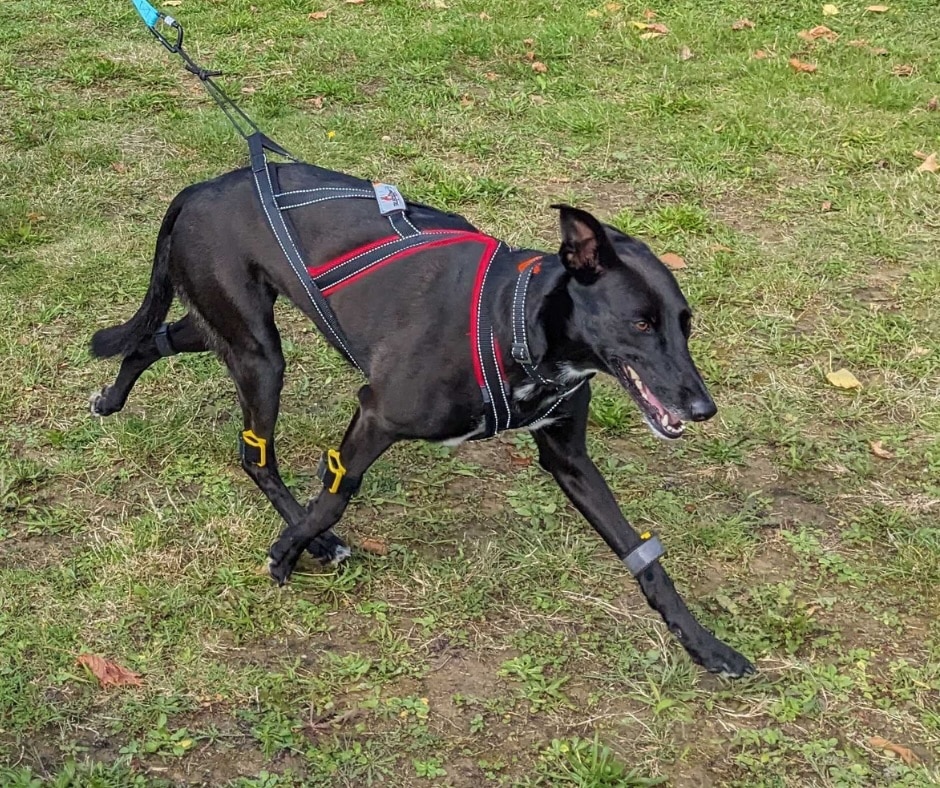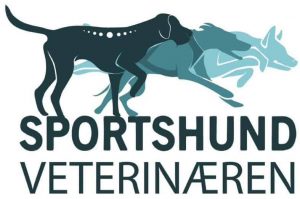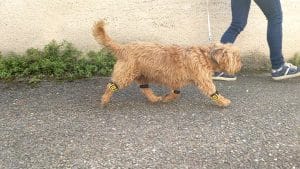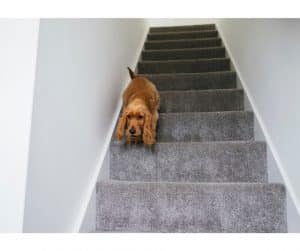It is not uncommon for canine healthcare professionals to encounter locomotor disorders with multifactorial origins: a history of injury, subtle joint issues, postural imbalances, or even muscular compensations invisible to the naked eye. So, how can we objectively evaluate the impact of a treatment on these often complex cases?
This is the very question addressed by Dr. Kine Mari Kløverød, veterinarian and animal chiropractor. Through one of her clinical cases, she shares how objective analysis using Tendiboots™ Canine enabled her to illustrate the immediate effects of a chiropractic treatment on a working dog.
Meeting Dr. Kine Mari Kløverød
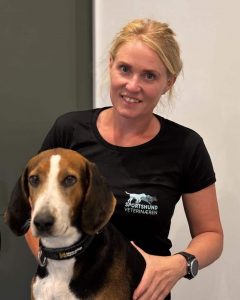
A graduate veterinarian and certified animal chiropractor, Dr. Kine Mari Kløverød practices in Norway. Formerly part of both AniCura Skien og Rising Dyreklinikk and EMPET Holstad team, she is launching her own practice in August 2025 under the name SportshundVeterinæren. Her clear goal: to provide high-quality care for sporting and working dogs by combining medical expertise, a preventive approach, and personalized locomotion monitoring.
“I integrated Tendiboots into my practice to detect and confirm subtle lameness or gait asymmetries. The results help me assess progress over time and ensure that the chosen treatment is effective. Owners also appreciate being able to clearly and objectively visualize the improvements.”
Molly, 9-year-old working dog: A revealing clinical case review
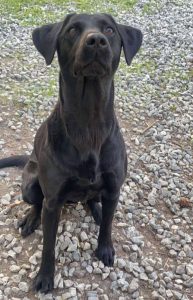
Among the many cases followed by Dr. Kløverød, one stood out in particular: Molly, a 9-year-old Labrador Retriever used for hunting and search and rescue missions.
Molly does not present any known hip or elbow dysplasia but has a history of an old tendon injury near the right hock. Until recently in good health, her owner had begun to notice a progressive stiffness in the hind limbs and intermittent lameness, along with an unusually low head carriage.
Initial locomotion examination
Before any treatment, Dr. Kløverød observes Molly in motion, then performs an initial Tendiboots™ analysis. The main observations are:
- Lameness in the left hind limb, confirmed both visually and by the data.
- Weight distribution heavily shifted forward (32 to 33 N/kg on the forelimbs), indicating a compensatory load transfer.
- Clear asymmetry between the hind limbs, with an obvious functional imbalance.
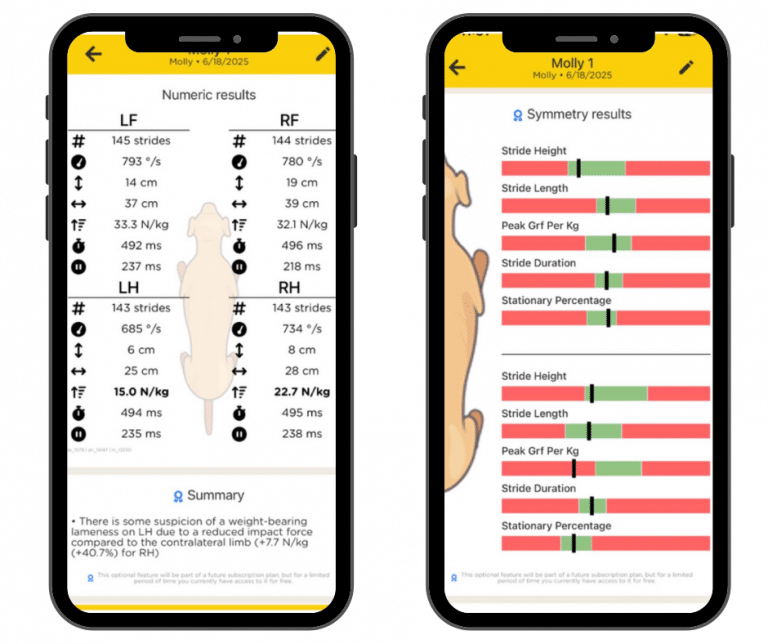
Chiropractic Treatment Applied
Based on her clinical evaluation and the gait data provided by Tendiboots™, Dr. Kløverød decided to proceed with chiropractic treatment following these principles:
- Correction of vertebral subluxations at the pelvis (pelvic tilt), lumbar region (notably L6), and thoracolumbar junction (T12-T13).
- Postural work to address a slight lumbar kyphosis.
- Muscle release techniques targeting the sartorius and cranial thigh muscles on the left side.
- Myofascial work on the epaxial muscles on both sides.
The treatment goal was to restore functional alignment, improve joint mobility, relieve compensatory muscle tensions, and rebalance weight distribution.
Post-Treatment Results: Insights from Tendiboots™ Analysis
About 30 to 45 minutes after the session, a new Tendiboots™ analysis was performed. The results are clear:
- Better symmetry between the hind limbs.
- Rebalancing of weight distribution: the load is now shared more evenly between the forelimbs and hind limbs.
- Visible improvement in stride height and length on all four limbs.
“For me, these numbers clearly show that the chiropractic treatment restored alignment and mobility. We observe a reduction in compensatory patterns, improved functional stability, and possibly even enhanced nerve signaling.”
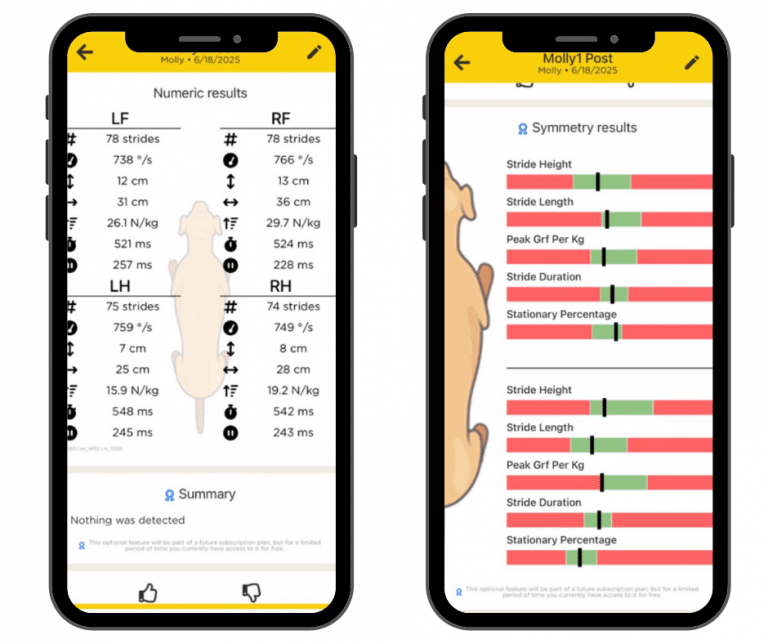
Tips for Practitioners: Early Detection and Prevention
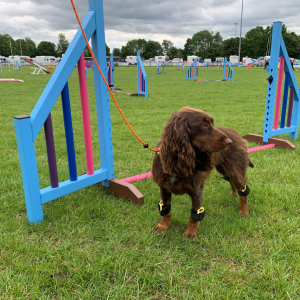
According to Dr. Kløverød, sporting and working dogs should be regularly monitored to detect subtle changes before major injuries develop.
“Objective gait analysis enables preventive action. If postural imbalances are identified early, treatments can be adapted to avoid worsening conditions.”
The combined approach of subjective analysis (palpation, observation) and objective analysis (Tendiboots™) allows for more informed decision-making, especially in cases that lie on the borderline between normality and pathology.
Find all the latest updates from Dr. Kine Mari Kløverød on her Instagram page!
https://www.instagram.com/sportshundvet

